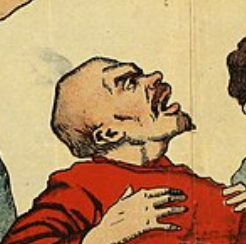I have been looking for a 2D reflective water shader for some time and was delighted to see that this tutorial was posted on YouTube to create just that:
https://www.youtube.com/watch?v=wPr5PvSgxFo
I’ve had a go at implementing it and have got the reflective water rendering. It’s very “Kingdom: Two Crowns” like when spread across the full width of the scene.
However, as you can see from the image above, I’ve drawn a pond (as a separate Sprite2D) and I’ve applied the water shader to the pond. It’s done that, but draws the water as a rectangle.
Is there a way to apply this shader to the Sprite2D, but conform to the actual sprite (only the light blue), rather than as a rectangle?
I think you’d want to apply the alpha value of the sprite. You can do that by making the last line “COLOR = vec4(mix(…).rgb, texture(TEXTURE, UV).a)”
This worked perfectly - thank you!!
For anyone else looking here later, the final shader code (confirmed working Godot 4.2) is:
shader_type canvas_item; uniform sampler2D screen_texture : hint_screen_texture; uniform vec4 water_color : source_color; uniform sampler2D wave_noise : repeat_enable; void fragment() { vec2 water_wave = (texture(wave_noise, UV * TIME * 0.02).rg - 0.5) * 0.02; vec2 uv = vec2(SCREEN_UV.x , SCREEN_UV.y - UV.y) + water_wave; vec4 color = texture(screen_texture, uv); float mix_value = 1.0 - UV.y; float avg_color = (color.r + color.g + color.b) / 3.0; avg_color = pow(avg_color, 1.4); mix_value += avg_color; mix_value = clamp(mix_value, 0.0, 0.7); COLOR = vec4(mix(water_color, color, mix_value).rgb, texture(TEXTURE, UV).a); }Credits to Single-mindedRyan for creating this shader in the first place.
Oof, I haven’t touched shaders in Godot myself yet, besides a very simple section during one tutorial, so maybe I should not give any advice, but I think this can be solved by applying the shader to the pond and adding a check for transparency before applying the changes to the pixels.
I’m typing the from my phone and can’t double check on my computer.
In the fragment shader, get the texture of the white puddle, and the UV of the puddle texture, then get the pixel color of this puddle texture using the same method as the color for the mirror effect was gotten except don’t reverse the V coords. With this color, multiply only the alpha channel into the final color’s alpha channel.


